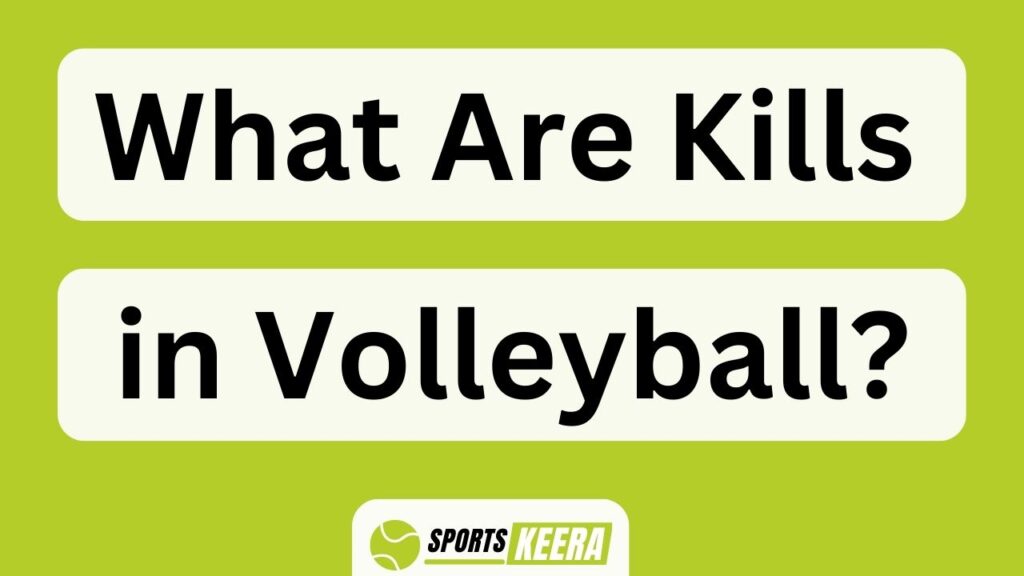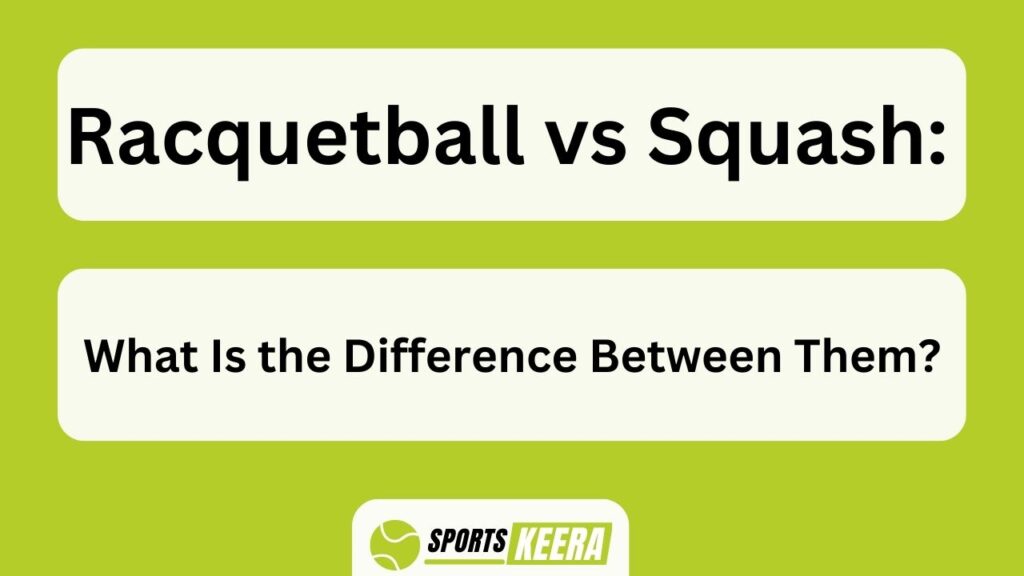Did you know that in professional volleyball matches, the average number of kills per team ranges from 30 to 40? That’s a staggering amount of power and precision displayed on the court!
In this article, we will delve into the world of kills in volleyball and explore their importance, different types, recording methods, and strategies to increase kill opportunities.
Kills are one of the fundamental aspects of scoring points in volleyball. They occur when a player successfully hits or spikes the ball over the net into the opposing team’s court without being touched by any defensive player. Analyzing kill efficiency can provide valuable insights into a player’s performance and overall team success.
We will also discuss famous players known for their exceptional kills and how blocking plays a crucial role in determining kill success.
By understanding what kills are and their significance in volleyball, you’ll gain a deeper appreciation for this exhilarating sport.
Key Takeaways What Are Kills In Volleyball?
- Kills are fundamental for scoring points in volleyball.
- Kill efficiency is critical in evaluating offensive effectiveness.
- Different types of kills include spike kills, tip kills, and roll shots.
- Blocking disrupts the opposing team’s offense and influences kill success.
Basic Definition of Kills in Volleyball
So, kills in volleyball are basically when a player smashes the ball into the opponent’s court, scoring a point for their team. The importance of kills cannot be overstated in this sport, as they contribute directly to the overall score and momentum of the game. Achieving kills requires a combination of skill, strategy, and teamwork.
Players must possess proper technique when executing a kill, such as generating power through a strong approach and jump, timing their swing accurately, and aiming for open spaces on the opponent’s court. Additionally, communication among teammates is crucial to set up successful kills by coordinating plays and exploiting weaknesses in the defense.
With these techniques in mind, kills become an essential aspect of volleyball gameplay that can greatly impact a team’s success.
As we transition to discussing the importance of kills in scoring points…
Importance of Kills in Scoring Points
While spiking the ball over the net, players aim to terminate the rally by delivering a killer blow that leads to a point. Kills in volleyball are of utmost importance as they directly contribute to scoring points for the team. Kill efficiency, which measures the percentage of successful kills out of total attempts, is a critical statistic in evaluating a player’s effectiveness on offense. A higher kill efficiency indicates that a player can consistently deliver powerful and accurate spikes, making them a valuable asset to their team. The role of setters is crucial in setting up kills by strategically placing the ball for hitters to attack. Setters must possess precise decision-making skills and good communication with their teammates to maximize kill opportunities. Moving forward, let’s explore different types of kills in volleyball.
| Importance of Kill Efficiency | Role of Setters in Setting Up Kills |
|---|---|
| Measures effectiveness on offense | Strategically place the ball for hitters |
| Higher percentage indicates skill | Precise decision-making skills |
| Valuable asset to team | Good communication with teammates |
Now let’s delve into the various types of kills in volleyball without delay.
Different Types of Kills in Volleyball
In volleyball, there are different types of kills that players use to score points.
The first type is the spike kill, which is a powerful hit that is aimed downward towards the opponent’s side of the court. This type of kill requires strength and accuracy to execute effectively.
Another type of kill is the tip kill, where the player lightly taps the ball over the net and into an open space on the opponent’s side. This move requires finesse and quick thinking to catch the defense off-guard.
Lastly, there are roll shots, which are low, fast hits that skim over or just above the net. These shots can be used to catch blockers off-balance and create opportunities for scoring points.
Spike Kills
To rack up points in volleyball, you’ll want to perfect your spike kills. Spike technique is crucial for executing successful attacks and scoring points for your team.
When it comes to spike kills, the key is generating power and accuracy in your hits. A strong approach with a quick arm swing will help you generate maximum power behind the ball. Moreover, proper footwork and timing are essential to ensure that you hit the ball at its highest point for optimal trajectory and force.
Additionally, attacking strategies play a vital role in spike kills. Reading the opponent’s defense, adjusting your approach based on their positioning, and exploiting any gaps or weaknesses are all crucial aspects of executing effective spike kills.
Mastering these techniques and strategies will greatly enhance your offensive game. Now let’s transition into discussing ‘tip kills’ as another type of kill in volleyball without missing a beat.
Tip Kills
Get ready to elevate your offensive game with tip kills, a strategic move that can catch your opponents off guard and earn you valuable points on the volleyball court. Tip kills involve using finesse and precision to lightly tap the ball over the net, making it difficult for the opposing team to defend.
These techniques are especially effective when attacking from the back row, as they allow players to exploit gaps in the defense and find open spaces on the court. By mastering tip kill techniques, players can add an element of surprise to their offensive arsenal and keep their opponents guessing.
Now let’s dive into another effective offensive move: roll shots.
Roll Shots
Prepare to take your offensive game to the next level with roll shots, a mind-blowingly effective move that will leave your opponents dazed and confused. Roll shots are a type of attack in volleyball where the player uses an open hand to softly hit the ball over the net. This technique requires precision and finesse, as it aims to place the ball in an area where defenders cannot reach it easily.
One advantage of using roll shots is that they can catch opponents off guard, as they expect a more powerful attack. Moreover, roll shots allow for greater control and accuracy, making them ideal for situations where power may not be necessary. With their ability to deceive and strategically place the ball, roll shots are a valuable tool in any hitter’s arsenal.
Transitioning into how kills are recorded in statistics…
How Kills are Recorded in Statistics
Watch closely as you smash the ball over the net, sending it soaring to the other side and earning yourself a kill in the statistics. Kills, in volleyball, are crucial for teams to secure points and ultimately win matches.
Tracking kill statistics allows coaches and players to assess their offensive efficiency and effectiveness. Kills highlight a player’s ability to attack aggressively, finding gaps in the opponent’s defense and capitalizing on opportunities. They also provide valuable insight into which players are performing well offensively and contribute significantly to the team’s success.
To increase kill opportunities, teams can employ various strategies such as running quick sets, utilizing effective communication, and studying opponents’ defensive patterns. These tactics aim to create favorable situations for attackers to score kills more frequently.
Strategies to Increase Kill Opportunities
To maximize their offensive potential, teams can employ various strategies for effective hitting and creating kill opportunities. Cleverly setting up plays and effectively communicating are key components in creating these opportunities.
By analyzing the opponent’s defense and adjusting their own offensive formations accordingly, teams can exploit weaknesses and create openings for kills. This can involve running quick sets to catch the defense off guard or executing well-timed combination plays to confuse blockers.
Additionally, establishing a strong connection between setters and hitters through consistent training and communication can greatly increase the chances of successful kills. These strategies not only rely on individual skills but also emphasize teamwork and coordination.
By implementing these tactics, teams can significantly enhance their ability to score kills consistently throughout a match.
In order to achieve kills, hitters play a crucial role in executing effective attacks against the opposing team’s defense.
Role of Hitters in Achieving Kills
As a hitter, you are the sharp arrow aiming to pierce through the opponent’s defense and leave your mark on the court. Your role is crucial in achieving kills in volleyball. While setters play a significant part in setting up the perfect ball for you, it is ultimately your responsibility to execute powerful attacks that result in kills. Hitters must possess excellent timing, technique, and court awareness to exploit any gaps in the opponent’s defense. Additionally, hitters have defensive responsibilities when not attacking, such as covering blocked shots or digging out opponents’ hits. This well-rounded skill set makes hitters invaluable assets to their team’s success.
| Role of Setters | Defensive Responsibilities |
|---|---|
| Precise positioning of sets | Covering blocked shots |
| Quick decision-making | Digging out opponents’ hits |
Understanding the role of setters and fulfilling defensive responsibilities enhances your effectiveness as a hitter. The impact of blocking on kill success will be explored further in the subsequent section.
SUBSEQUENT SUBTOPIC: ‘Impact of Blocking on Kill Success’
Impact of Blocking on Kill Success
In our previous discussion, we explored the crucial role of hitters in achieving kills in volleyball. Now, let’s delve into the impact of blocking on kill success.
Blocking is a fundamental defensive strategy where players aim to intercept the opponent’s attack at the net. It not only disrupts the opposing team’s offensive play but also significantly influences kill success for our team.
Here are four key ways in which blocking impacts kill success:
- Reduces hitting angles and forces attackers to adjust their shots.
- Creates opportunities for quick transitions and counterattacks.
- Increases pressure on opposing hitters, leading to more errors.
- Boosts team morale and momentum when successful blocks are made.
Understanding how blocking affects kill success allows us to analyze various aspects of gameplay more effectively, including analyzing kill efficiency in our next section without writing ‘step’.
Analyzing Kill Efficiency
Let’s dive into analyzing the efficiency of kills in volleyball and uncover the secrets to scoring big. When it comes to kill shot accuracy, measuring kill efficiency is essential. By looking at the ratio of successful kills to total attempts, we can determine how effectively a player converts their opportunities into points for their team.
To better understand this concept, take a look at the table below that illustrates different players’ kill efficiencies:
| Player Name | Total Attempts | Successful Kills | Kill Efficiency |
|---|---|---|---|
| Player 1 | 100 | 70 | 70% |
| Player 2 | 80 | 50 | 62.5% |
| Player 3 | 120 | 90 | 75% |
| Player 4 | 60 | 40 | 66.7% |
| Player 5 | 150 | 100 | 66.7% |
Analyzing these numbers allows coaches and players to identify areas for improvement and focus on enhancing their kill efficiency.
Transitioning into the subsequent section about famous players known for their kills, we can learn valuable lessons from these exceptional athletes.
Famous Players Known for Their Kills
Check out these legendary players who are absolute masters at scoring big with their killer shots. When it comes to famous players known for their kills in volleyball, there are a few names that immediately come to mind.
One of them is Karch Kiraly, a three-time Olympic gold medalist and one of the most successful volleyball players of all time. His powerful spiking technique and ability to find open spots on the court made him almost unstoppable.
Another player who deserves recognition is Gabrielle Reece, known for her dominance at the net and her aggressive approach to attacking. Her height and athleticism allowed her to deliver devastating kills that left opponents in awe.
These famous players have perfected their kill techniques through years of practice and dedication, making them icons in the sport.
As we conclude, it becomes evident that kills play a crucial role in volleyball. They not only earn points but also demoralize opponents and boost team morale. The ability to consistently execute powerful kills requires skill, precision, and strategic thinking. It’s an art form that separates the great from the good in this sport.
Whether it’s through a well-timed spike or a perfectly placed tip, kills have become synonymous with excitement and highlight-reel moments in volleyball. So next time you watch a match, pay close attention to those players who excel at scoring big with their killer shots – they’re truly remarkable athletes who epitomize the significance of kills in this exhilarating game.
Conclusion and Final Thoughts on the Significance of Kills in Volleyball
As we wrap up, it’s clear that the artistry and impact of powerful kills cannot be overstated in the exhilarating world of volleyball. Kills play a crucial role in team dynamics, as they not only contribute to scoring points but also have a psychological impact on players.
When a player successfully executes a kill, it boosts their confidence and motivates their teammates. On the other hand, witnessing an opponent deliver a powerful kill can have a demoralizing effect on the opposing team.
The importance of kills goes beyond just scoring points; they shape the momentum of the game and create opportunities for strategic plays. Whether it’s an aggressive spike or a well-placed shot, kills are essential in driving success on the volleyball court and leaving lasting impressions on both players and spectators alike.
Frequently Asked Questions
How many kills does a player need to have in order to be considered successful in volleyball?
Kills are vital for determining a player’s success in volleyball. However, they aren’t the only statistic to consider. Other key factors include assists, blocks, and digs. To increase kills, players can focus on improving their hitting technique and finding open spaces on the court.
Are kills the only way to score points in volleyball?
Can a team win a volleyball game without any kills? While kills are an essential part of scoring, other techniques like blocks and aces can also contribute. Kills play a crucial role in the overall strategy of a volleyball team by adding points and putting pressure on the opposing team’s defense.
Can a kill be achieved by any player on the team, or is it typically the responsibility of specific positions?
Any player can achieve a kill in volleyball, but it is typically the responsibility of specific positions. Outside hitters and opposite hitters often have the primary role of securing kills, while setters play a crucial role in setting up their teammates for successful attacks.
How do the different types of kills in volleyball vary in terms of difficulty and effectiveness?
In volleyball, different types of kills vary in terms of difficulty and effectiveness. The difficulty level is determined by factors such as the angle, speed, and precision of the shot. Effectiveness is measured by whether the kill results in a point for the team.
How do kills in volleyball compare to kills in other sports, such as basketball or soccer?
Kills in volleyball and kills in other sports, like basketball or soccer, differ in terms of scoring. While kills are a crucial part of volleyball strategy, goals serve a different purpose in soccer and require distinct skills. Kills vs. Goals: A Comparison of Scoring in Volleyball and Soccer.
Conclusion
In conclusion, kills in volleyball are the powerful and decisive blows that propel a team towards victory. Just like a skilled archer hitting the bullseye with precision, kills are the arrows that pierce through the opponent’s defense.
They are not only crucial for scoring points but also serve as a testament to a player’s strength and technique. By analyzing kill efficiency and implementing strategic blocking techniques, teams can maximize their kill opportunities and dominate the game.
Ultimately, famous players who excel in kills become legends, leaving an indelible mark on the sport’s history.





